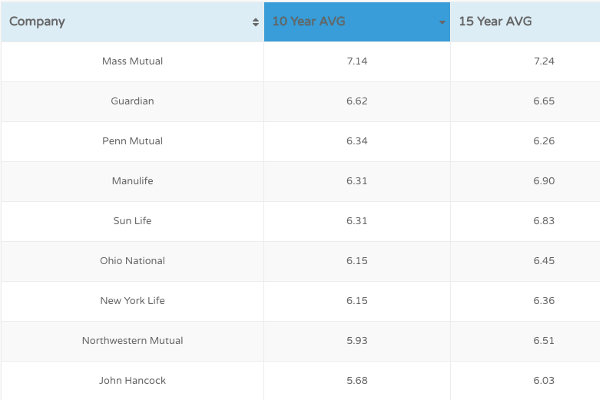What Is Whole Life Insurance?
In this article, we will go over what is whole life insurance. This article is a quick introduction to whole life insurance. If you are looking for a more in-depth analysis, you should read Top 7 Whole Life For Cash Value.
Also, if you are looking for a better understanding, you should read our Whole life insurance for dummies article.
There are a few different types of life insurance. Some of the most common ones are:
- Term Insurance
- Universal Life Insurance
- Whole Life Insurance
There are significant differences between these policies. The main differences are how long the policies last and how long the policies are guaranteed.
[embed]https://youtu.be/fzgQWR9EuhI[/embed]
The main feature of a whole life policy is that you have multiple guarantees. Strong guarantees include:
- Death Benefit: The death benefit will be there forever as long as you pay the premiums.
- Premiums: Premiums on a whole life are guaranteed never to go up.
- Cash Value Growth: The cash value on a policy grows on a guaranteed basis.
- Health Rating: Your health rating will always remain the same for the life of the policy.
These strong guarantees are what separates whole life insurance from the rest of the policies.
Whole Life Cash Value
Some permanent life insurances have this feature called cash value. Cash value is one of the most important features of whole life insurance.
Cash value is a saving component in your whole life policy that is accessible at any time. The cash inside of a plan only goes up each year. However, at the beginning of the plan, there won't be much cash value to access.
Cash values have a guaranteed rate of return. This rate of return helps the policy grow over the years. Also, some whole life has dividends on top.
The policies that have dividends are called participating policies.
Whole Life Insurance Dividends

As we mentioned, some whole life insurance policies are participating, which means that they receive a dividend to help the growth of the policy. The most common participating policies are from Mutual companies.
Some of these participating companies pay a dividend as high as 6.4%.
This dividend is reinvested, and the policy, and you do not have to pay taxes as it grows.
You can see how dividends have performed over the years: Whole Life Dividends.
Death Benefit
As we already mentioned, the death benefit is guaranteed in policy, as well. However, the dividend can also grow just like the cash value.
You have to understand that as long as the premiums are paid, the death benefit will remain in force forever.
Other interesting features of the death benefit are that it is tax-free.
Paid-up whole life insurance
Some policies have a feature that you will only have to make payments for a specific number of years.
After you have completed the payments, your policy is paid-up, and your whole life will remain in-force forever without having to make any more payments.
Typical time frames for a paid-up policy are 10, 20 years, and until age 65.
Higher Prices
In reality, most of the features in a whole life also make it more expensive than the rest. But don't be scared by the higher costs, remember you get what you paid for.
Final Word
That was just a quick overview of whole life insurance and some of its features. We hope that now you have a better understanding of whole life insurance.
Related Articles:
Whole Life Insurance for Dummies
Participating Whole Life Insurance: Things to Know
Whole Life Insurance and the Biggerpocket Money Interview
Whole Life Insurance can be a great tool in protecting your family and saving money for future goals.
If you would like to compare the best companies just run a quote here: Whole Life Insurance Quotes
Please leave a comment!




